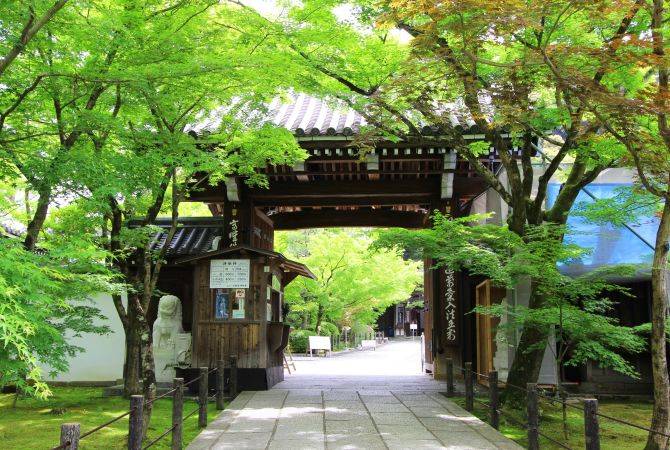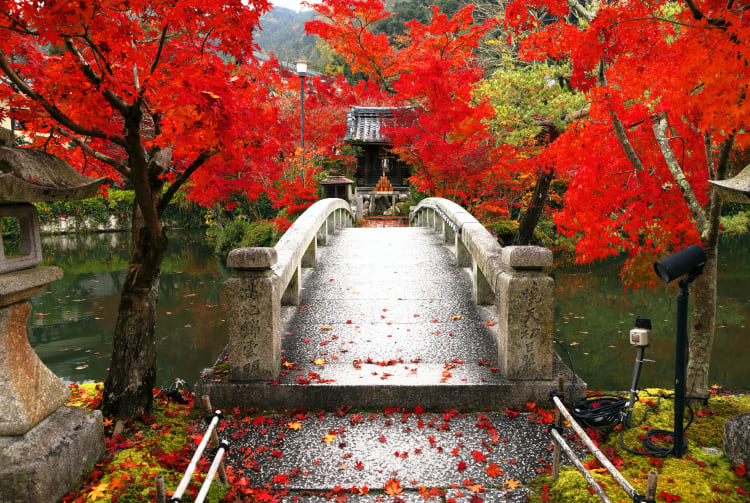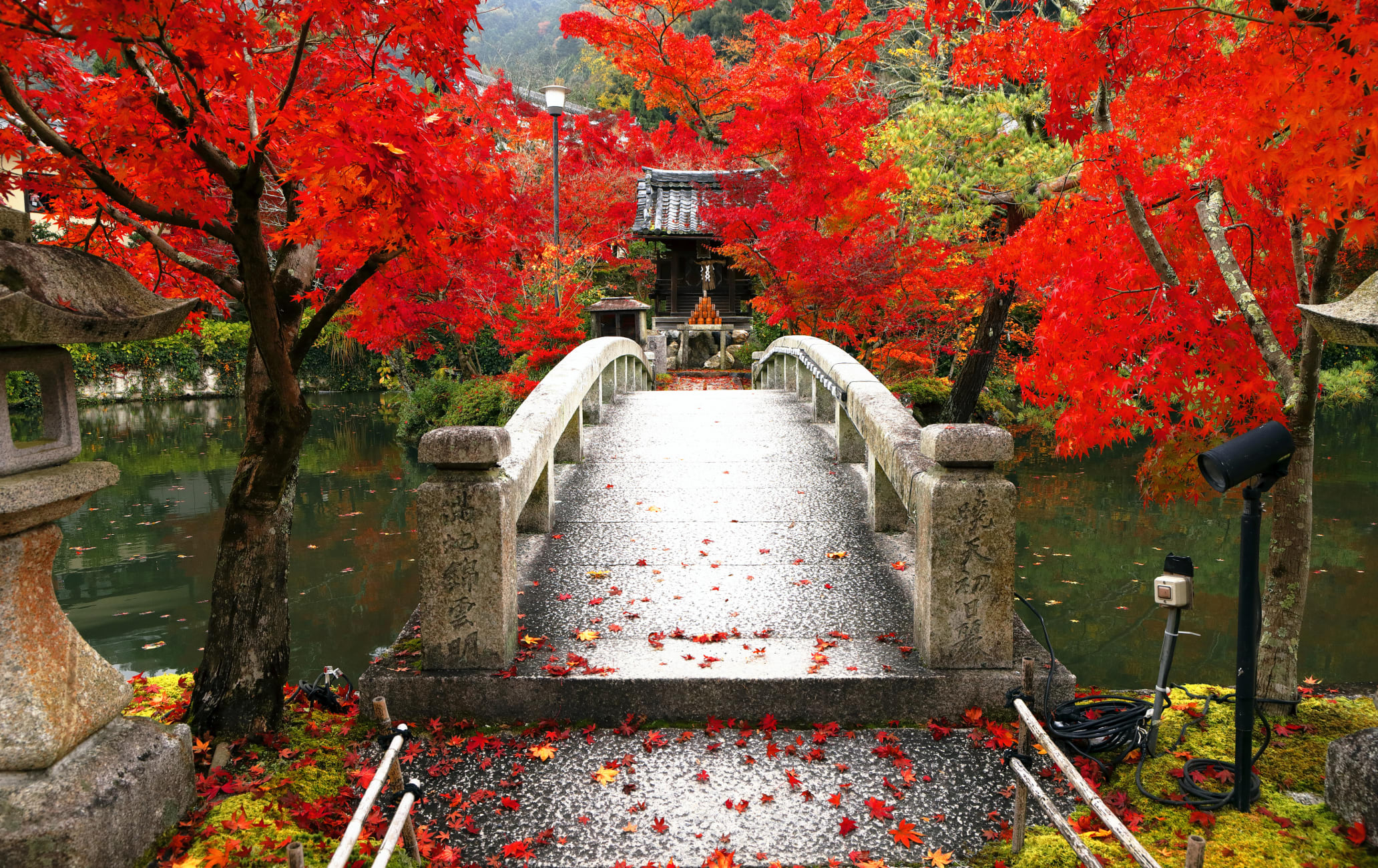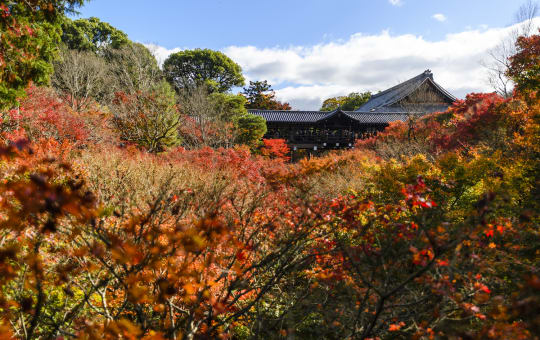Kyoto's best autumn display and an unusual Buddha
Eikando is a temple famous for brilliant foliage in the fall, made more magical by its evening illumination. This period draws huge crowds, but the temple is worth visiting throughout the year.
The temple is located just south of the Philosopher's Path in central Higashiyama. Its grounds are expansive, with many buildings connected by covered walkways.
Quick Facts
Eikando was a gift from a court noble in the Heian period (794-1185) to a Buddhist priest
Eikando is also known by three other names: Zenrinji, Shojuraigo-san, and Muryojuin
How to Get There
Eikando is easily accessed by train from Kyoto Station followed by a short walk.
From Kyoto Station, take the Kyoto Municipal Subway Karasuma Line to Karasuma Oike Station. Transfer there to the Tozai Subway Line going toward Rokujizo to Keage Station. It's a 15-minute walk from there.


A court noble's former villa
Eikando is an old villa, once belonging to a nobleman who gave it to a Buddhist priest in 853. The worldly pursuits of leisure and natural beauty took on a spiritual dimension as the villa was adapted to its new purpose.
An unusual pose for Buddha
Eikando is filled with various works of art, the most notable of which is a statue of the Amida Buddha with his head turned to one side rather than facing forward as he is usually portrayed. Legend has it that a head monk was performing a ritual for the statue when it turned to face him and spoke to him.




Climb to a pagoda with a view
Taho-to Pagoda is located up a steep flight of stairs above the temple complex, and offers a great view of the city below.
One highlight of Eikando is Hojo Pond, which is surrounded by a scenic garden. In the middle of the pond is a small island with a quaint shrine built on it.

A leisurely visit to Eikando will take an hour or two. You can easily stay longer, though, especially if you enjoy the aesthetic elements of Buddhism.


























































